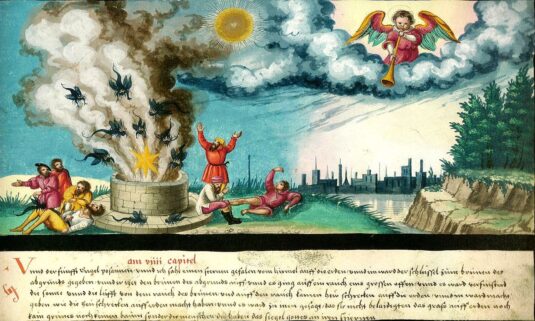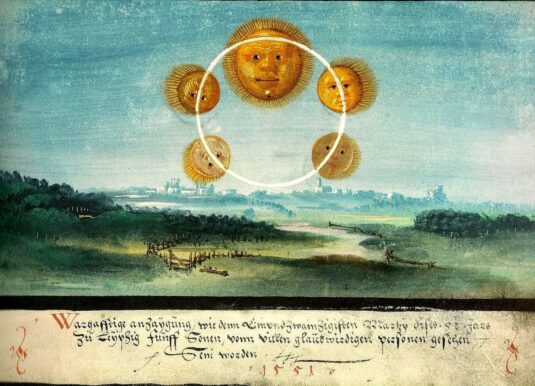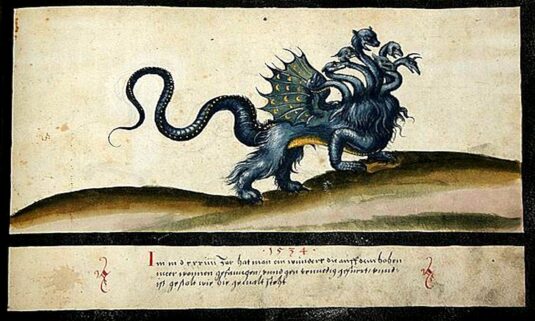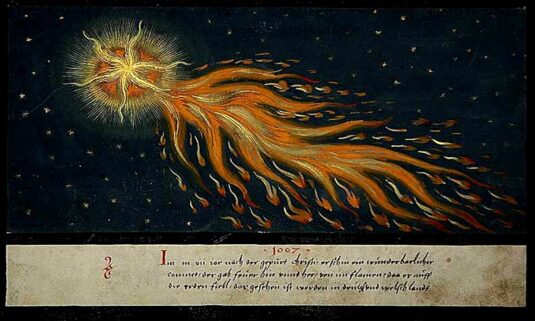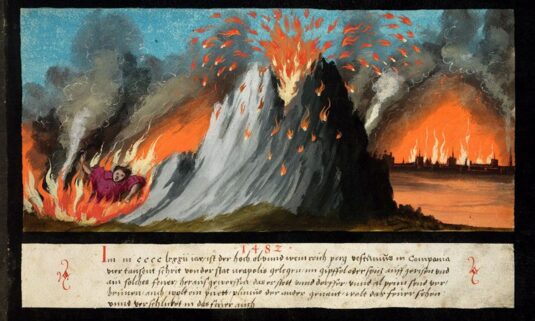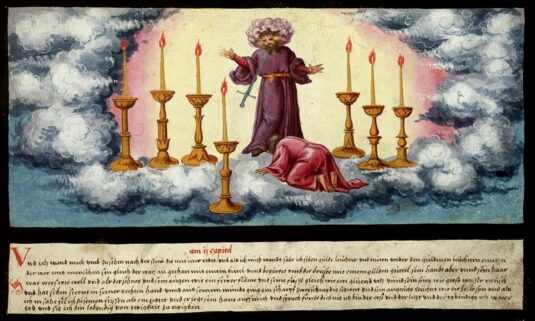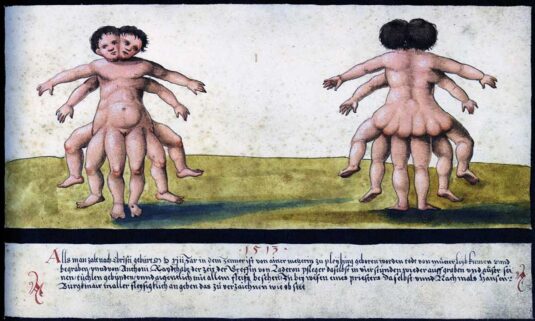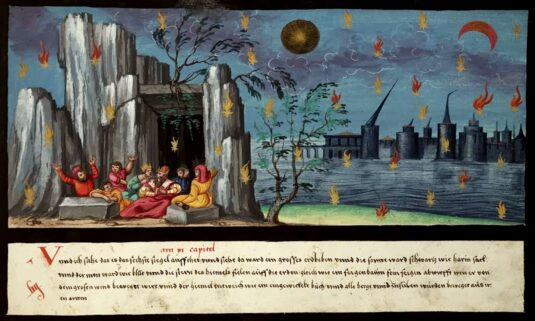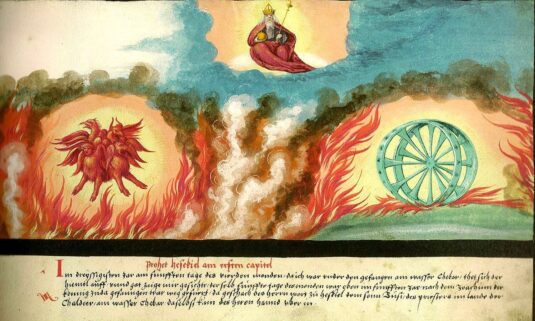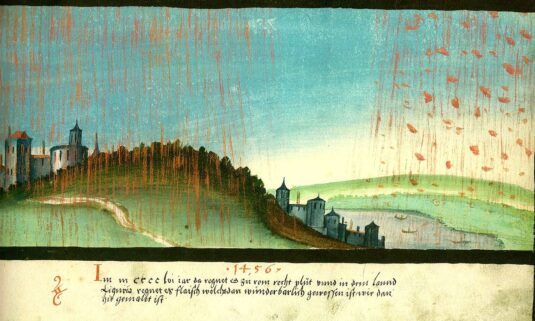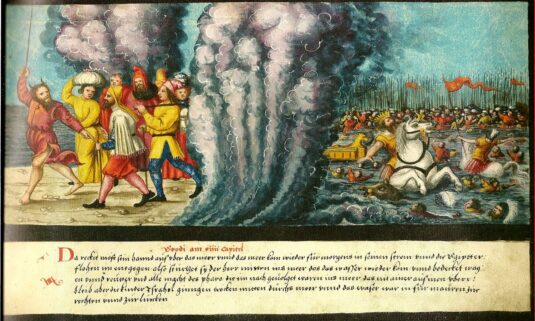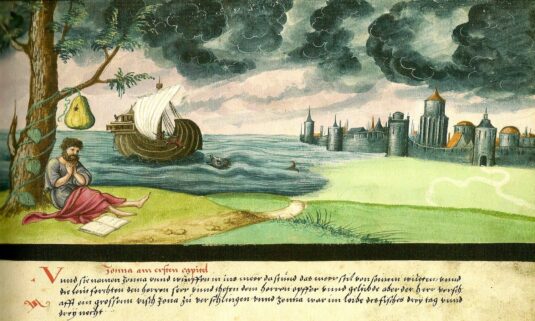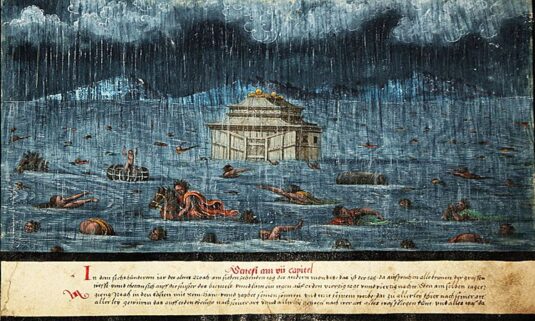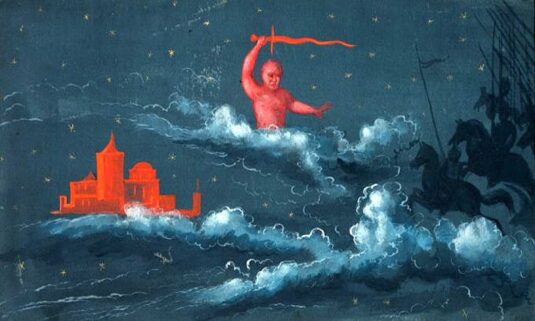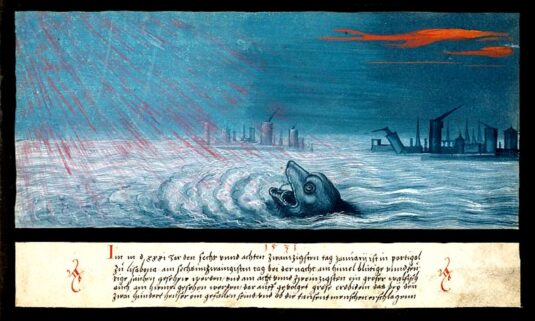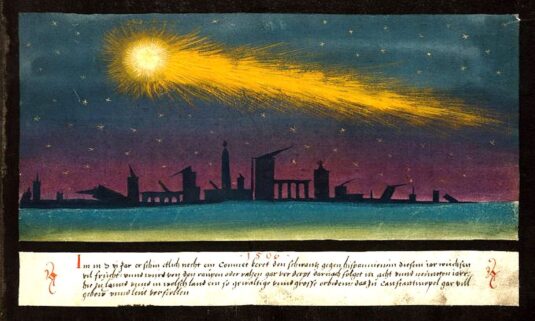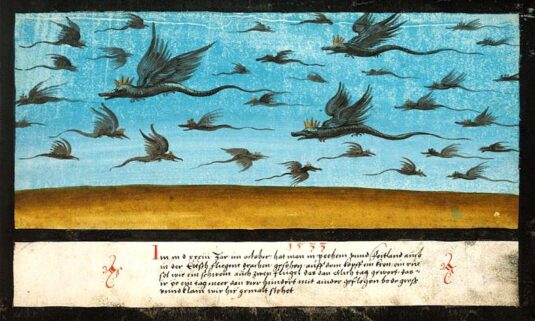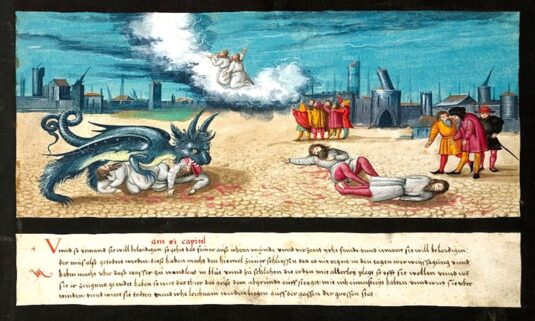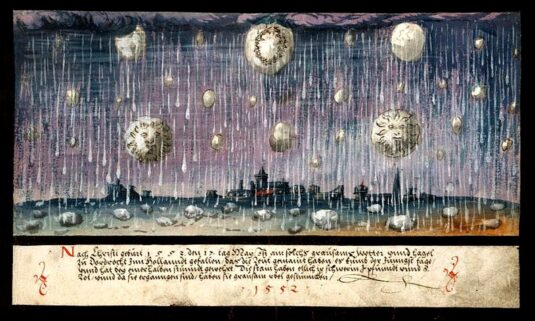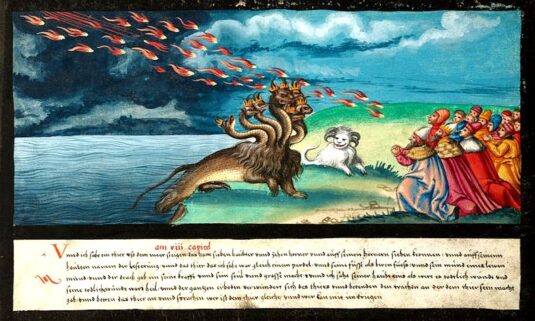|
Book of Miracles: 16th-century apocalyptic visions in pictures In 1552, a curious and lavishly illustrated manuscript titled Augsburg Book of Miraculous Signs appeared in the Swabian Imperial Free City of Augsburg, then a part of the Holy Roman Empire, located in present-day Germany. It exorcised, in remarkable detail and wildly imaginative artwork, Medieval Europe’s growing obsession with signs sent from “God” — a testament to the basic human propensity for magical thinking, with which we often explain feelings and phenomena beyond the grasp of our logic. This unusual Roman manuscript was recently discovered and published for the first time as The Book of Miracles — a sumptuous box-sized trilingual tome in English, French, and German, produced in Taschen‘s typical fashion of pleasurable aesthetic bombast. Somewhere between Salvador Dalí’s illustrations of Montaigne, the weird and wonderful Codex Seraphinianus, and the visual history of Gotham’s imaginary apocalypse, the book is a singular shrine to some of the most eternal of human hopes and fears, and, above all, our immutable longing for grace, for mercy, for the miraculous. |
Book of Miracles - 1506
In the year 1506, a comet appeared for several nights and turned its tail towards Spain. In this year, a lot of fruit grew and was then completely destroyed by caterpillars or rats. This was followed by an earthquake, so great and violent that in Constantinople, many buildings were destroyed and people perished.

